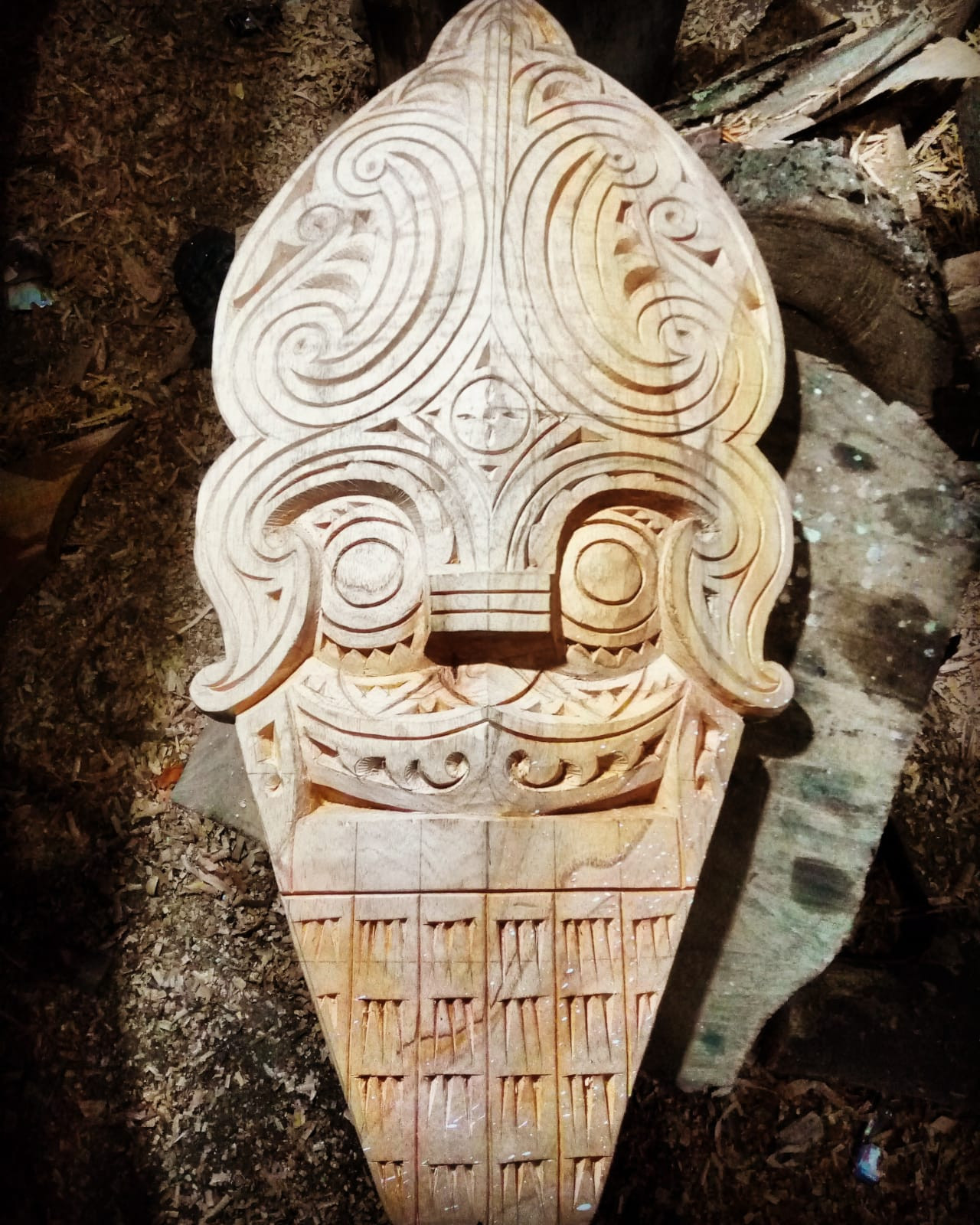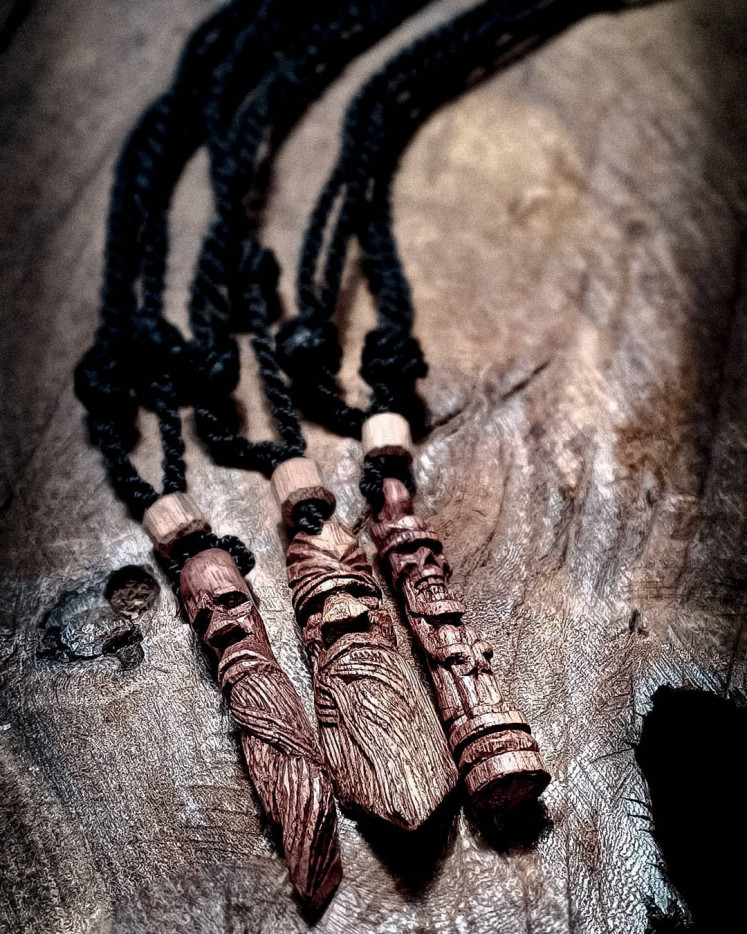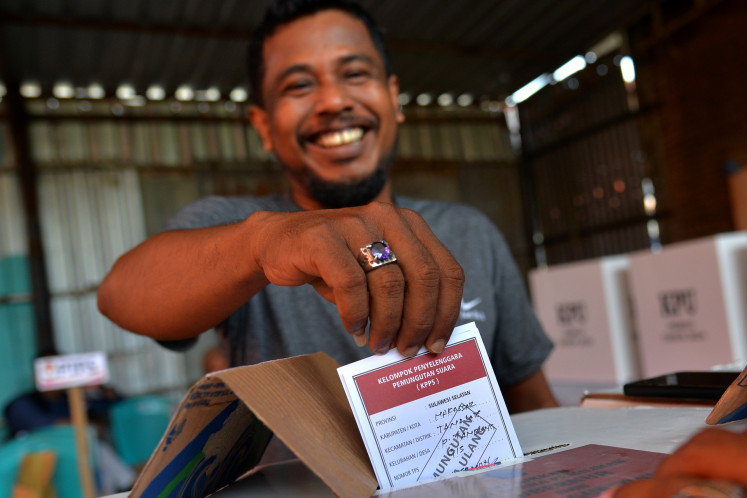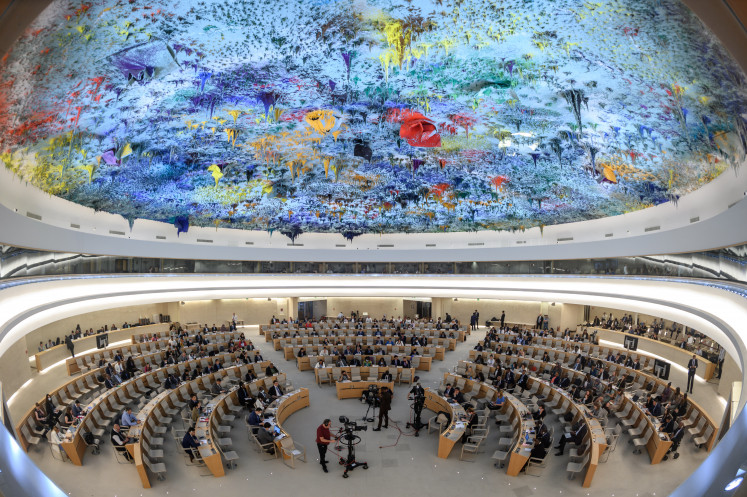Popular Reads
Top Results
Can't find what you're looking for?
View all search resultsPopular Reads
Top Results
Can't find what you're looking for?
View all search resultsCreating against the tide: Indonesia's ethnic artists dare to push the bounds
Change text size
Gift Premium Articles
to Anyone
I
n a country with strong religious underpinnings, Indonesian ethnic artists face unique challenges in pursuing their craft and preserving their cultures.
Jesral Tambun, 36, could not do much when the woodcarving he made for a homestay was rejected. His creation featured gorga: decorative motifs derived from Batak mythology. But his client did not seem to agree with the underlying philosophy of his carving art.
“When it was done, the [carving] I made was deleted and replaced” with a gorga design taken from the internet, the panggorga (gorga artist) from Toba regency, North Sumatra, told The Jakarta Post.
Jesral’s gorga carving depicted the Batak origin myth of human beings: Ompu Mulajadi Nabolon, the supreme deity, orders the hen Manuk Kulambu Jati to incubate three eggs, from which three sons hatch.
When they grow into adulthood, none of her sons has a partner, so Manuk Kulambu Jati asks Ompu Mulajadi Nabolon through the intermediary Leang-leang Mandi to provide wives for her three sons. Ompu Mulajadi Nabolon grants her wish by giving three bamboo stalks, from which three women are born.
However, the homestay owner did not approve of the story Jesral presented in his carving. “The gorga design I made was not in accordance with his religious beliefs,” said Jesral.
Work in progress: Jesral Tambun works at his workshop in Toba Regency, North Sumatra. (Courtesy of Jesral Tambun) (Courtesy of Jesral Tambun/Courtesy of Jesral Tambun)Creativity vs dogma
The country’s ethnic artists face many challenges in a society steeped in the teachings of six official religions: Islam, Catholicism, Protestantism, Buddhism, Confucianism and Hinduism. The confluence of established religions and the belief systems of over 1,300 ethnic cultures in Indonesia is, at times, the reason that ethnic art lacks public appreciation and acceptance.
This is also why many artists, including art graduates from universities, choose to pursue realist, abstract, installation and other contemporary or Western genres.
However, for a small number of artists, ethnic art is a calling or destined path. This is the experience of ethnic visual artist Deep Tarigan, 39, who often imbues his artwork with the myths of the Karo, a subethnic group of North Sumatra’s Batak culture.
For instance, after the 2010 eruption of Mount Sinabung in Karo regency, Deep made a painting inspired by the natural disaster, linking it to the cultural reality of the Karo faith.
His painting features an erupting volcano, a traditional house and a lizard. Below the mountain, he has illustrated the Gundala-gundala mask dance of the Karo culture, with one dancer holding the head of a buffalo toward the mountain, to be slaughtered.
Deep had observed the ritual practice performed by the people of Lau Kawar, a village located near the mountain, and recorded it on canvas.
“However, during the ritual I saw the villagers slaughtering an ox, and in my painting, I changed the ox to a buffalo, because my imagination said maybe the animal that should have been slaughtered was a buffalo,” he explained.
After finishing the painting and displaying it in his coffee shop, it sparked local debate about religious dogma and cultural reality.
“This is what came out of my heart. I just tried to put it in the painting [with] a different point of view,” he recalled telling those who disagreed with his painting. As an artist, Deep said, he merely depicted the reality around him by drawing on his imagination.
But his art has been appreciated by people outside his community.
A tourist from Russia once bought a carving of a Gundala-gundala mask that was displayed in his coffee shop. It turned out that the tourist was an artist and an art collector.
The 33-centimeter-tall statuette by Deep depicts one of the four types of Gundala-gundala masks: a king, a princess, a consort and a chief commander.
A Karo legend tells of a hornbill that often plays with a princess, but the princess is not allowed to hold the hornbill’s tail. But one day, the princess accidentally grabs its tail. The hornbill becomes angry and the commander tries to calm it down, but in vain. The king then summons a great shaman to quell the hornbill’s anger, and the princess survives the bird’s wrath.
“There is also a myth that believes this mask dance is performed to summon rain,” said Deep.
In addition to his paintings, Deep also uses the mythical symbols and stories of the Karo people in his sculptures and various souvenirs, including rings, bracelets, necklaces and T-shirts. This might seem ambitious, because sometimes these creative works are rejected.
Deep still considers ethnic art to be the path he must take as an artist. This is also because he is concerned about the continuity of Karo art: If it is not preserved, it could be eroded over time.
“I really hope that our ethnic arts are included in the local curriculum from elementary school, so the current generation has the correct understanding of their culture and can appreciate it,” he said.
Incorporating cultural symbols: Ethnic artist Deep Tarigan explores the symbols and folklore of the Karo tribe in his fine art. (Courtesy of Deep Tarigan) (Courtesy of Deep Tarigan/Courtesy of Deep Tarigan)Open interpretation
Mangatas Pasaribu, 65, a fine arts lecturer at the State University of Medan, agrees that ethnic art faces serious challenges. As an academic and an artist who is concerned about the future of ethnic art, he often encourages his students to explore this field.
According to Mangatas, Indonesian art generally looked to the West, particularly Europe, while European artists preferred to capture the archipelago’s natural beauty through realist, romantic realist as well as naturalist art, reproducing what is seen to remember them.
“However, the [tendency] to imitate is still there today, namely painting what is seen [physioplastic], when in fact, ideas and imagination can also develop what is seen [ideoplastic],” said Mangatas.
He also disagrees with juxtaposing dogmatic religious understanding and perceptions that arise from traditional arts, because each work of art can be interpreted broadly, restricted only by the viewer’s imagination.
“I myself am a church elder, but as an artist, I like to interpret symbols from Batak mythology. Does that mean I don’t believe in my religion?” Mangatas said.
According to him, periodically visiting art exhibitions can help people develop their ability to interpret art without being bound by their religion.
“It’s important to build esthetic appreciation and abilities, so that in the end you can feel the ecstasy from the artwork,” he added.
Life’s calling
Jesral is self-taught and developed his ethnic art skills and style organically through a spiritual journey that encountered many personal hardships.
He said his spiritual turning point occurred on July 1, 2011, when a fire burned down his house, and his health deteriorated for the next three years. Thirteen years before the fire, his father had died, and his mother had died in 2010, leaving Jesral and his siblings orphaned.
They became estranged from the village community and Jesral changed, preferring to be alone. Some people in his village even laughed at him because he often brought home discarded wood to carve.
In that solitude, he traveled from village to village and immortalized the gorga motifs he encountered with paper and pencil. Jesral had a natural talent for sculpting, and his life experience motivated him to pursue the gorga carving art, sharpening his skills until he finally became a panggorga.
One of his ethnic sculptures has been used to represent Lake Toba, one of the icons of Indonesian tourism, and he became known to a growing number of people.
He works every day on various carvings, from rehabilitating old Batak houses to creating gorga ornaments for modern homes. He has slowly rebuilt his house that burned down and turned it into a workshop.
“I’m really going against the grain,” he said, acknowledging that being consistent in his pursuit of ethnic art was challenging.
“Only dead fish go with the flow,” he said, chuckling at the suggestion that he had to be a strong fish to go against the tide.
“Yeah, if that’s what people say, it’s fine,” he said.












